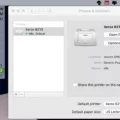When it comes to protecting your important documents, folder security is a must. Whether you’re a business or an individual, having secure folders and files is essential for keeping your information safe from malicious attackers. Fortunately, modern operating systems provide various tools for ensuring that your data remains secure. One of the most effective methods for keeping your folders and files secure is through encryption.
Encryption is a process that encodes data so that it can only be decoded by someone with the appropriate encryption key. This method of data protection ensures that the contents of a folder or file remain inaccessible to anyone who doesn’t have the key. Encrypting a folder or file is relatively simple and should be done on any important data you want to keep secure. To encrypt a folder or file, right-click on it and select “Properties” in the drop-down menu. On the General tab, click the Advanced button and check the box next to “Encrypt contents to secure data.” After checking the box, select Apply and click OK.
In addition to encryption, there are other ways to improve folder security on Windows systems. For example, setting permissions on certain folders ensures that only certain users can access them. To do this, open up the Properties dialog box for a particular folder or file and select the Security tab. Click Edit and then select which users will be granted access under Group or user name section in the Permissions section. Then use the checkboxes to set appropriate permission levels for each user before clicking Apply and OK.
Finally, another way to ensure folder security is by using third-party software such as WinRAR or 7-Zip to compress sensitive files into password-protected archives which can then be encrypted with AES 256-bit encryption as an extra layer of security.
Overall, it’s important to take steps toward securing your folders and files from malicious attackers who may try to gain access without permission in order to steal valuable information or cause damage to your system. By using built-in tools such as encryption as well as third-party software like WinRAR or 7-Zip you can be sure that your sensitive data remains safe from prying eyes and unwanted intrusions into your system.

Adding a Password to a Folder
Yes, you can put a password in a folder. To do this, first select the folder you want to encrypt. Right-click on the folder and select “Properties” from the drop-down menu. On the General tab, click the Advanced button. A window will appear with a checkbox labeled ‘Encrypt contents to secure data’. Check this box and then click Apply and OK. The next time you try to open or access this folder, Windows will prompt you for a password.
Restricting Access to a Folder
To restrict access to a folder, you can set up permissions for specific user accounts. First, make sure the folder is on an NTFS file system. Then open the folder containing the file you want to restrict and right-click the file. Select Properties and then click on the Security tab. Click on Edit and then click on Add. Type in the username of the account you want to restrict and select it under Group or user name. Under Permissions, select either Allow or Deny for each type of permission (Full Control, Modify, Read & Execute, List Folder Contents, Read, Write). Click OK when finished to save your changes and apply them to all subfolders and files within that folder as well.
Changing Folder Security Settings
To change folder security settings, you will first need to access the Properties dialog box. To do this, right-click on the folder you wish to modify and select ‘Properties’ from the menu. Then select the ‘Security’ tab. Here, you can set permissions for specific users or groups of users by clicking on the ‘Edit’ button. In the Group or user name section, select the user or group to which you wish to assign new permissions. You can then use the checkboxes in the Permissions section to specify what type of access each user or group has to that particular folder. Once you have made your selections, click ‘Apply’ and then ‘Okay’ to save your changes.
Protecting Computer Folders for Confidentiality
Protecting your computer folders for confidentiality is an important step to take in order to secure your data and maintain privacy. To do this, you can use encryption software. Encryption software works by scrambling the data in the folders so that only you can access it.
One way to encrypt your computer folder is through Windows File Explorer. Here’s how: Find and select the folder or file you want to encrypt. Right-click on the folder or file and select Properties. Open the General tab, and select the Advanced button. Check the box next to Encrypt contents to secure data. After checking the box, select Apply and click OK.
Another way to encrypt your computer folder is through third-party encryption software such as AxCrypt, 7-Zip, or VeraCrypt. These programs offer more robust encryption options than Windows File Explorer, with features such as password protection, two-factor authentication, key files, and even self-destructing files if someone tries to hack into them.
Regardless of which method you choose, it’s important to remember that encrypting your folders doesn’t guarantee complete security—it just adds an extra layer of protection that could help keep your data safe from prying eyes.
Adding a Password to a Folder in Windows 10
Unfortunately, it is not possible to put a password on a folder in Windows 10 without the use of third-party software. While Windows 8 and earlier versions included support for password-protecting folders, this feature was removed from Windows 10. To password-protect a folder in Windows 10, you will need to download specialized third-party software or use a zipped folder. When downloading third-party software, be sure you download it from a reputable source.
The Inability to Password Protect a Folder
Putting a password on a folder is not possible because your computer’s operating system does not provide this type of security. Your computer’s account is already protected from unauthorized access with a password (and even encryption if you use BitLocker). Folder passwords are also not supported by most cloud services, so the data stored in the folder would not be secure if it were accessed by someone other than you. Additionally, folder passwords are difficult to remember and can lead to confusion if multiple users need to access the same folder. For these reasons, it’s generally better to leave folders unprotected so that others can access them as needed.
Creating a Protected Folder
Creating a protected folder is simple. First, create a new folder on your computer and then right-click on it. A menu will appear, select Properties from the menu. In the Properties window, go to the General tab and click the Advanced button. Another window will open; check the box next to Encrypt contents to secure data and click OK. Now back in the Properties window, click Apply, and then OK. Your folder is now password protected and its contents will be encrypted so that no one can access it without your permission.
Making a Private Folder
To make a folder private, you need to create it with a hidden attribute. To do this, open your file manager app and create a new folder. When you name the folder, add a dot (.) before the name of the folder. This will make it a hidden folder and it won’t appear on your home screen or any other directory listing. After creating the hidden folder, you can move any files or folders you wish to keep private into the newly created folder. To access your private files, you need to type in the exact path or name of the folder in your file manager app. That way, only those who know exactly where the folder is located will be able to access it.
Changing Permissions on a Secure Folder
To change permissions on a secure folder, you’ll first need to open the folder and select the Permissions tab. From this tab, you can add or remove users or Google Groups that are authorized to access the folder. To add a user or Google Group, enter the email address of the new user or group and select their permission level. You can select from ‘Can edit,’ ‘Can comment,’ or ‘Can view.’ Once you have chosen the appropriate permission level for each user/group, press Add to save your changes. To remove a user/group from the list of people authorized to access the folder, click on their entry in the list and press Remove. After making any desired changes, don’t forget to press Save to ensure that all permissions are updated correctly.
Checking Folder Permissions
To check the permissions on a folder or file, follow these steps:
1. Right-click the folder or file and select ‘Properties’ from the context menu.
2. In the Properties window, switch to the ‘Security’ tab and click ‘Advanced’.
3. In the Advanced Security Settings window, select the ‘Permissions’ tab to view all of the users who have permissions over that particular file or folder. You can also view their assigned permissions here and edit them as needed.
4. Once you are done making changes, click ‘OK’ to save your changes and close the window.
Securing Files: The Best Practices
The best way to secure files is to use encryption. Encryption is a process that scrambles the data in a file so that it is unreadable without an encryption key. This makes it virtually impossible for someone who doesn’t have the encryption key to access the data. It also ensures that even if an unauthorized user gets access to the file, they won’t be able to make sense of its contents. Additionally, some encryption programs can be used to create backups of encrypted files, which provides an extra layer of security against data loss.
Conclusion
In conclusion, folder security is an important part of keeping your data safe and secure. It involves encrypting the contents of a folder to protect its contents from unauthorized access, setting permissions for specific accounts, and restricting access to certain users. This can be done through the Properties dialog box or by using third-party software. Implementing proper folder security measures is an effective way to protect your data and ensure that it remains safe and secure at all times.








